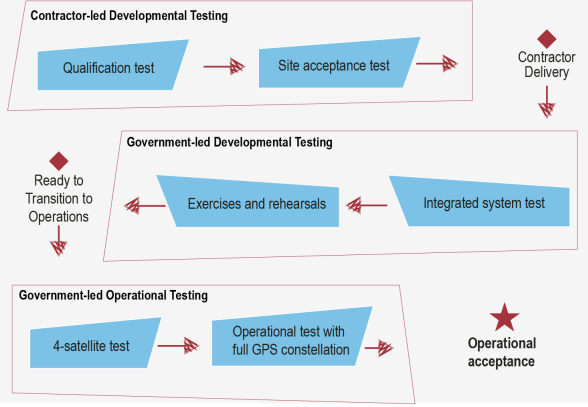GPS III Satellite (Lockheed Martin).
$7.6 billion OCX still not ready to go…
A U.S. Government Accountability Office report, released this week, says that military GPS space segment programs, the ground control system and user equipment initiatives face delays because of bureaucratic, manufacturing and technology issues.
The GAO said that while the space segment has mitigated some technical and manufacturing challenges, the U.S. Space Force has consumed its schedule margin that results in potential delays. These delays risk’s the “DoD’s goal to have 24 M-code satellite in continuous operation through the 2030s,” the report said.

A continuing sore spot is RTX Corp.’s RTX 0.28%↑ $7.6 billion Next Generation Operational Control System, known as OCX, which has drawn the ire of lawmakers because of delays and huge cost overruns. The GAO report said the system of 17 ground stations for current and improved GPS satellites, will not be ready on the delivery date in October. The report said that the U.S. Space Forces will test the system to see whether it can be operational by December 2025.
Despite the huge importance of PNT to the U.S. military, and because there are so many committees in the Pentagon, stewardship of GPS has become a “when everyone is in charge, no one is” scenario, said Dana Goward, Resilient Navigation & Timing Foundation president. In addition, committees, military services and labs each have projects for non-GPS PNT, but none seem to be coordinated, he said.
“Most of our PNT comes from GPS and we have nothing else on the horizon. If GPS signals are not available for any significant amount of time…well, we don’t want to live through that day or week,” Goward said.
The GAO report said that while the Space Force has made progress in developing user equipment, years of delays have increased risks to deliver capabilities to the military. These include testing of microchips and cards that process M-code signals.



























